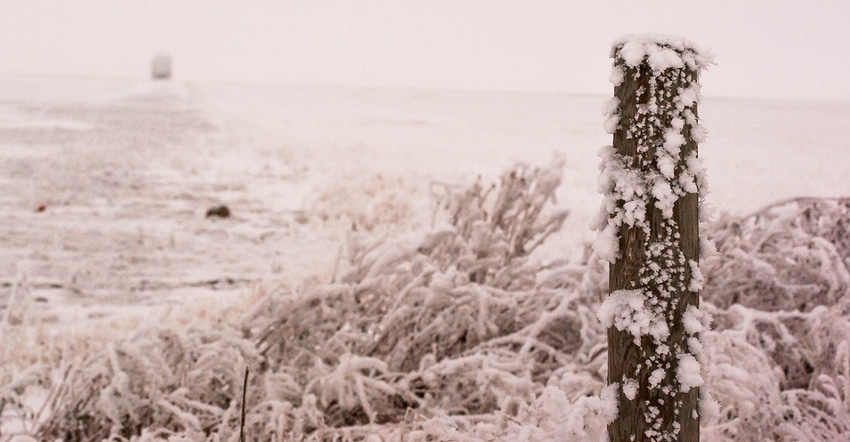December 3, 2018

During the quiet downtime of winter, many in the farm community get caught up on financial planning for the year, equipment repair, livestock care or renovating outbuildings.
It is also a good season for good reads. One book I would highly recommend to you is David Laskin’s “The Children’s Blizzard.” This book, first published in 2004, is an excellent retelling of the famous storm from Jan. 12, 1888 — 130 years ago — that killed more than 200 schoolchildren.
It dramatically impacted the lives in the pioneer communities of southeastern South Dakota, northwestern Iowa, northeastern Nebraska and southwestern Minnesota. Laskin reconstructs the blizzard from historical documents and interviews descendants of some of the families who were highly affected by this storm.
One reviewer of this book noted that it was “a gripping chronicle of meteorological chance and human folly and error.”
Much of the data documentation used to describe the storm was pulled from the Minnesota State Climatology Office in St Paul. This storm was poorly forecast by the U.S. Army Signal Corps and the Minnesota Weather Service Office in Northfield. In addition, a relatively mild spell of weather preceded it.
Jan. 12, 1888, started as a reasonably nice day, with temperatures climbing into the 20s and 30s ahead of the weather front that was still out in the Dakotas to the west. Few people expected a sudden turn in the weather. However, the onset of the storm came suddenly at midday, much like a thunderstorm squall line does in the middle of summer.
Sudden, fierce snowstorm
Many eyewitnesses reported the rapid approach of very dark low clouds from the west, with a sudden and strong wind shift. Schoolteachers across the region dismissed their students early in hopes that they could make it home before the peak fury of the storm arrived. This was a mistake, as many schoolchildren never made it home.
Snow fell at the rate of 3 inches per hour, with gale-force winds that made for very little visibility on the open prairie. Snow piled up into enormous drifts, blocking railroad tracks, obscuring roads and trails, and even burying open-range cattle. There are few actual measurements of the total snowfall. However, some historical pictures show several feet of snow in places.
The backside of this blizzard ushered in an Arctic air mass that dropped the temperature to -37 degrees F at New Ulm, -44 degrees at Moorhead, and -53 degrees at St. Vincent. Nobody knows what dangerous windchill values prevailed. Following passage of the storm, the search for frozen bodies in the prairie landscape was a gruesome task.
Some schoolteachers were regarded as heroes and heroines for their bravery in either keeping children inside the school for the duration of the storm, burning the school furniture to keep warm; or for tying them together with a rope and personally leading them to their respective homes before the full impact of the storm materialized. Some lost fingers and toes to frostbite.
Of course, there was a public outcry for the lack of warning. Three years later, in 1891, the federal government established the U.S. Weather Bureau with the USDA. The bureau was given storm warning responsibility, with a mandate to use the telegraphic lines, scheduled railroads and a system of display flags to warn the public of impending winter storms.
If you find yourself bored this winter, grab a copy of Laskin’s book and get caught up by this dramatic historical story.
Seeley is professor emeritus of climatology at the University of Minnesota.
About the Author(s)
You May Also Like




